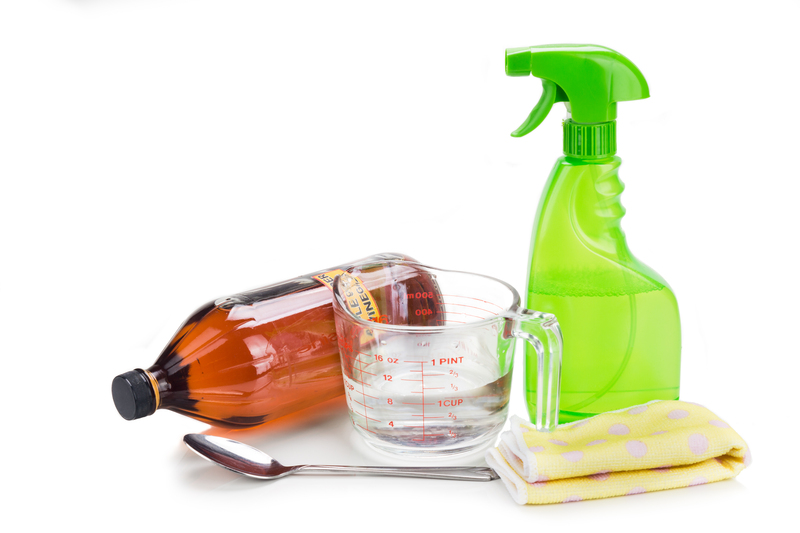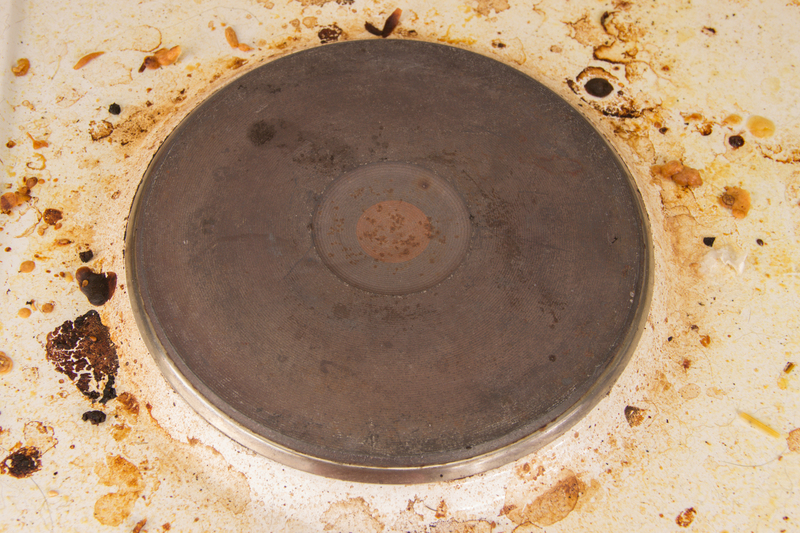Discover the Best Methods for Spotless Curtain Cleaning
Posted on 26/05/2025
Discover the Best Methods for Spotless Curtain Cleaning
Curtains play an essential role in adding elegance, warmth, and style to your living spaces. However, these stunning pieces of home decor are also magnets for dust, pet hair, pollen, smoke, and unpleasant odors. Discovering the best methods for spotless curtain cleaning isn't just about appearance--it's about promoting a healthier indoor environment and boosting the lifespan of your drapes. In this comprehensive guide, we'll explore the most effective techniques, expert tips, and special care instructions to help you achieve perfectly clean curtains every time.

Why is Curtain Cleaning Important?
Before diving into curtain cleaning methods, let's understand why regular cleaning is critical:
- Health Benefits: Curtains capture allergens, dust mites, and bacteria that can impact indoor air quality.
- Preserving Fabric: Routine cleaning maintains the fabric's texture, color, and structure.
- Enhancing Appearance: Fresh, clean curtains elevate the look and feel of every room.
- Odor Removal: Lingering smells from cooking, smoke, or pets are eliminated with proper cleaning.
How Often Should You Clean Your Curtains?
The frequency depends on your environment, curtain material, and presence of pets or allergies. As a general guideline:
- Light Curtains: Every 3-6 months
- Heavy Drapes: Once a year
- Sheers and Net Curtains: Every 2-3 months
- Homes with Allergies or Pets: Monthly cleaning is recommended
Best Methods for Spotless Curtain Cleaning
The best ways to clean curtains will depend on the fabric, type, and manufacturer recommendations. Here are the top methods to achieve spotless curtains:
1. Regular Dusting and Vacuuming
If your curtains aren't heavily soiled, frequent dusting or vacuuming can work wonders. Use the soft brush attachment on your vacuum, moving from top to bottom on both sides of the curtain. This helps remove dust, pollen, and pet dander before they can settle deep into the fibers.
- Weekly dusting is essential for delicate or sheer curtains.
- Always check for loose threads or damage before vacuuming.
- Don't forget to clean curtain rods and hardware, as these areas collect dust as well.
2. Spot Cleaning Stains
Emergencies happen--be it coffee spills, greasy fingerprints, or ink marks. Spot cleaning saves your curtains from permanent stains and prevents unnecessary full washes. Here's how to do it right:
- Act Fast: Blot the stain with a clean, white cloth (do not rub!).
- Mix a gentle detergent with lukewarm water.
- Use a soft sponge or cloth to gently dab the affected area.
- Test the solution on a hidden patch first to check for colorfastness.
- Pat dry and leave the curtain open to air dry fully.
3. Hand Washing Your Curtains
Hand washing is the best method for cleaning delicate or embroidered curtains. Lightweight and net curtains, lace drapes, and other sensitive fabrics respond well to gentle hand washing.
- Carefully remove curtain hooks and all attachments before washing.
- Fill a large basin or bathtub with cold or lukewarm water and add a mild detergent.
- Submerge the curtains. Swish them around gently with your hands, avoiding harsh wringing or twisting.
- Rinse thoroughly in cool water until detergent is gone.
- Lay flat or hang to air dry. Avoid direct sunlight to protect fabric colors.
4. Machine Washing Curtains
Machine-washable curtains save time and effort, but it's crucial to follow strict care instructions:
- Read the Label: Always check the care label for washing instructions and temperature limits.
- Use Gentle Cycle: Opt for cold water and a gentle cycle setting to reduce wear and tear.
- Wash with mild, non-toxic detergent.
- Do Not Overload: Give curtains enough space to move freely in the machine.
- Remove promptly after the cycle ends to reduce wrinkles.
- If possible, hang to dry immediately--using a clothesline or shower rod.
- For large or heavy drapes, consider professional cleaning to avoid damage or shrinkage.
5. Dry Cleaning: The Expert's Choice
For velvet, lined, interlined, or thermal curtains, dry cleaning is the safest and most efficient solution. This is particularly important for fabrics that may bleed, shrink, or distort in water.
- Find a reputable cleaner experienced with curtains.
- Point out tough stains, and remove all hooks/rings before handing over.
- Dry cleaning preserves fabric's natural drape and texture while ensuring a deep, chemical-based clean.
Additional Tips for Spotless Curtain Cleaning
Avoid Common Pitfalls
- Never use strong bleach or harsh chemicals unless the care label specifically allows it.
- Avoid high-heat tumble drying, as it can damage delicate fabrics.
- Do not iron plastic-lined or coated curtains.
- Always spot test new cleaning products on a small, hidden patch first.
Dealing with Curtain Linings and Special Fabrics
Certain curtain types need extra care:
- Blackout curtains usually have an acrylic backing--avoid machine washing unless the label allows.
- Thermal curtains or those with foam linings should be dry cleaned to prevent delamination.
- Silk and linen curtains are ideally dry cleaned, or hand-washed with special silk-safe detergents.
Quick Refresh: Steaming Curtains at Home
Regular steaming is a game-changer for maintaining spotless curtain cleanliness. Not only does it deodorize and freshen fabric, but the heat also helps kill bacteria and dust mites.
- Use a handheld garment steamer or iron with a vertical steam function.
- Hold the steamer 6-10 cm away and move slowly top-down.
- Steaming removes wrinkles and odors without soaking the fabric.
How to Extend the Life of Your Curtains
A few smart habits will keep your curtains in top condition for years:
- Regular airing: Open windows when possible to prevent moisture and mildew buildup.
- Avoid direct sunlight, which can cause fading. Use blinds or shades if possible.
- Rotate your curtains if you have two sets, especially in high-traffic areas.
- Use tiebacks or holdbacks to prevent hands from soiling the fabric.
Frequently Asked Questions about Spotless Curtain Cleaning
Can I clean my curtains without taking them down?
Yes! Regular vacuuming, brushing, and steaming can be done while curtains are hanging. For deep cleaning, removal is necessary.
How do I remove mold or mildew from curtains?
Take affected curtains outside and brush off as much mold as possible. Wash with a mix of detergent and a little vinegar if safe for the material. When in doubt, seek professional curtain cleaning.
Do all curtains need to be dry cleaned?
No. Many curtains can be hand or machine washed, but always consult the care label before choosing the cleaning method.
Can I use fabric softener on curtains?
Use with caution. Fabric softener may leave residues or reduce fabric's flame-retardant qualities. Read the label and use only if recommended.
Is it safe to iron my curtains?
Generally, yes, but only on the reverse side and at the correct temperature for your fabric. For delicate curtains, use a pressing cloth or set the iron to a low heat.

Pro Tips for Spotless Curtain Cleaning
- Always clean windows and sills before rehanging washed curtains.
- For floor-length drapes, place a clean sheet underneath during washing or steaming.
- If in doubt, consult a curtain cleaning expert to prevent damage and ensure the best results.
Summary: Unlock the Secret to Pristine Curtains
Achieving spotless curtain cleaning doesn't have to be daunting. With the right methods--vacuuming, spot cleaning, hand or machine washing, and expert dry cleaning--you can keep your window dressings fresh, vibrant, and free from allergens year-round. Remember to always check care labels, act quickly on stains, and treat fabrics gently for the best results. With these tips, your curtains will dazzle with cleanliness, transforming your living space into a healthier, more inviting haven!
For more expert tips on home care and how to clean your curtains flawlessly, bookmark this guide and revisit it whenever your drapes need a refresh.




